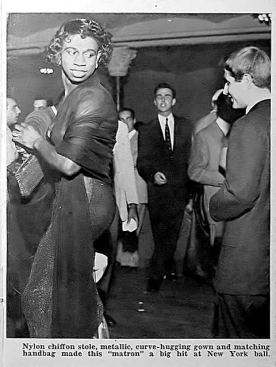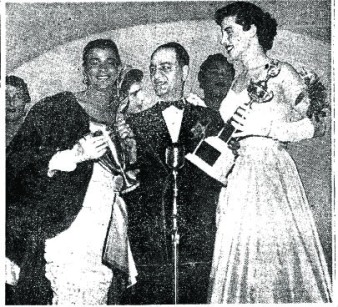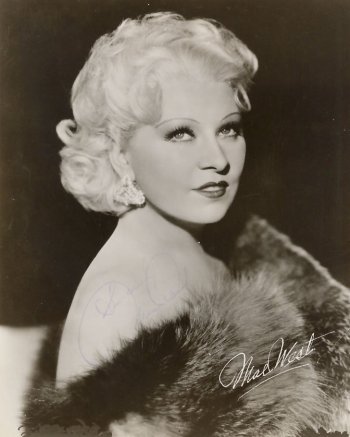 After Alice goes through the mirror in Lewis Carroll’s “Through the Looking Glass” she wanders through a mirror image fantastical version of the house she left, then discovers a garden with flowers who not only can talk but will also talk back at her with attitude. The equivalent scene in the musical “Speakeasy” finds John Allison wandering through a labyrinth of glass and mirrors until he discovers a flower shop. Inside are a trio of Florists, gay men working after hours sewing their dresses for the Jefferson Ball.
After Alice goes through the mirror in Lewis Carroll’s “Through the Looking Glass” she wanders through a mirror image fantastical version of the house she left, then discovers a garden with flowers who not only can talk but will also talk back at her with attitude. The equivalent scene in the musical “Speakeasy” finds John Allison wandering through a labyrinth of glass and mirrors until he discovers a flower shop. Inside are a trio of Florists, gay men working after hours sewing their dresses for the Jefferson Ball.
The Jefferson Ball is based on the Hamilton Lodge Ball, the largest of the drag balls that were hugely popular in the 1920’s and 1930’s. (I will go into more detail on that in a future post.)
You can get a taste of the beginning of the scene where John meets the Florists and their mentor Julian Carnation (much more on him in a future post too…) in The Speakeasy Glossary. One big question for me writing this and other scenes in Speakeasy was trying to authentically capture the idioms of Prohibition era Queer subculture. Non-fiction history books supplied me with many slang words, but not much actual authentic dialog as spoken by gay men and women amongst themselves, away from mainstream ears. There are hints of 1930’s gay argot here and there in some pre-code Hollywood movies (the documentary The Celluloid Closet provides a few choice excerpts) but nothing extensive, as far as I could tell.
 The best descriptions of the Gay repartee of the time comes in the most authoritative non-fiction book on the era, George Chauncey’s “Gay New York – Gender, Urban Culture and the Making of the Gay Male World, 1890 – 1940”, when the author describes Mae West’s play “The Drag” in detail. Mae West brought three plays to Broadway between 1926 and 1928, “Sex”, “The Drag” and “The Pleasure Man”, which caused quite the scandal and got Ms. West in a lot of trouble with the law, as well as made her a star.
The best descriptions of the Gay repartee of the time comes in the most authoritative non-fiction book on the era, George Chauncey’s “Gay New York – Gender, Urban Culture and the Making of the Gay Male World, 1890 – 1940”, when the author describes Mae West’s play “The Drag” in detail. Mae West brought three plays to Broadway between 1926 and 1928, “Sex”, “The Drag” and “The Pleasure Man”, which caused quite the scandal and got Ms. West in a lot of trouble with the law, as well as made her a star.
Mae West shocked and titillated contemporary audiences by putting gay male characters and dialog full of gay slang and campy repartee on stage. Mr. Chauncey peeked my interest by quoting a few choice ripe lines in his book and promising a climax to “The Drag” that featured a “drag ball, which lasted twenty minutes and allowed thirty of its performers to put on a “show” much as they might have” at any of the actual drag ball venues of the time.
 Twenty minutes of drag ball repartee?! I had to see that and ordered a copy of “Three Plays by Mae West”. But I would be disappointed. You see, I skimmed over an important word in Mr. Chauncey’s description: “unscripted” as in “The play culminated with an unscripted drag ball, which lasted twenty minutes…”
Twenty minutes of drag ball repartee?! I had to see that and ordered a copy of “Three Plays by Mae West”. But I would be disappointed. You see, I skimmed over an important word in Mr. Chauncey’s description: “unscripted” as in “The play culminated with an unscripted drag ball, which lasted twenty minutes…”
So most of all that juicy authentic period gay dialog in “The Drag” was improvised night after night, but not written down, and so very little of it ended up in the official playscript. Mae West’s plays still gave me a general idea of the slang of the era, but most of the juiciest details were already quoted in “Gay New York”.
For the most part, when writing the dialog for the Florists and other queer, camp characters in Speakeasy I would not be able to rely on just copying the authentic slice of queer life Mae West presented to ecstatic and scandalized Broadway audiences of the time, but I would have to use the few isolated slang words that made the history books and extrapolate from the handful of lavender* dialog that did get recorded in “The Drag” and a few other places.
So all the “camp” dialog in “Speakeasy” is almost completely of my own invention, informed as best I could from what tidbits I have received from “olden days”. But since all of “Speakeasy” is a fanciful mélange of history and Lewis Carroll fantasy, that is probably for the best.
* “lavender” was an adjective often used in publications of the time to refer to describe homosexuals.
For more on “Speakeasy” go here or here, and to listen to the music, go here.




You probably already know this, but just in case…there is an extensive archive and gay history library at the NYC gay center.
https://gaycenter.org/community/library
Maybe you can find more info there.
LikeLiked by 1 person